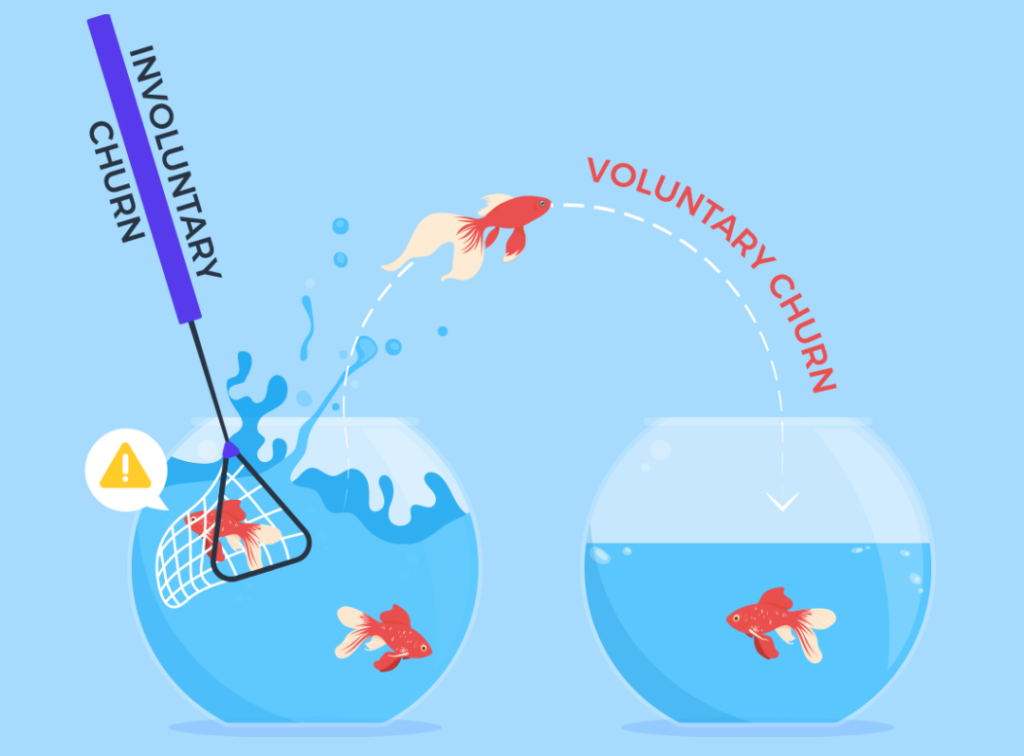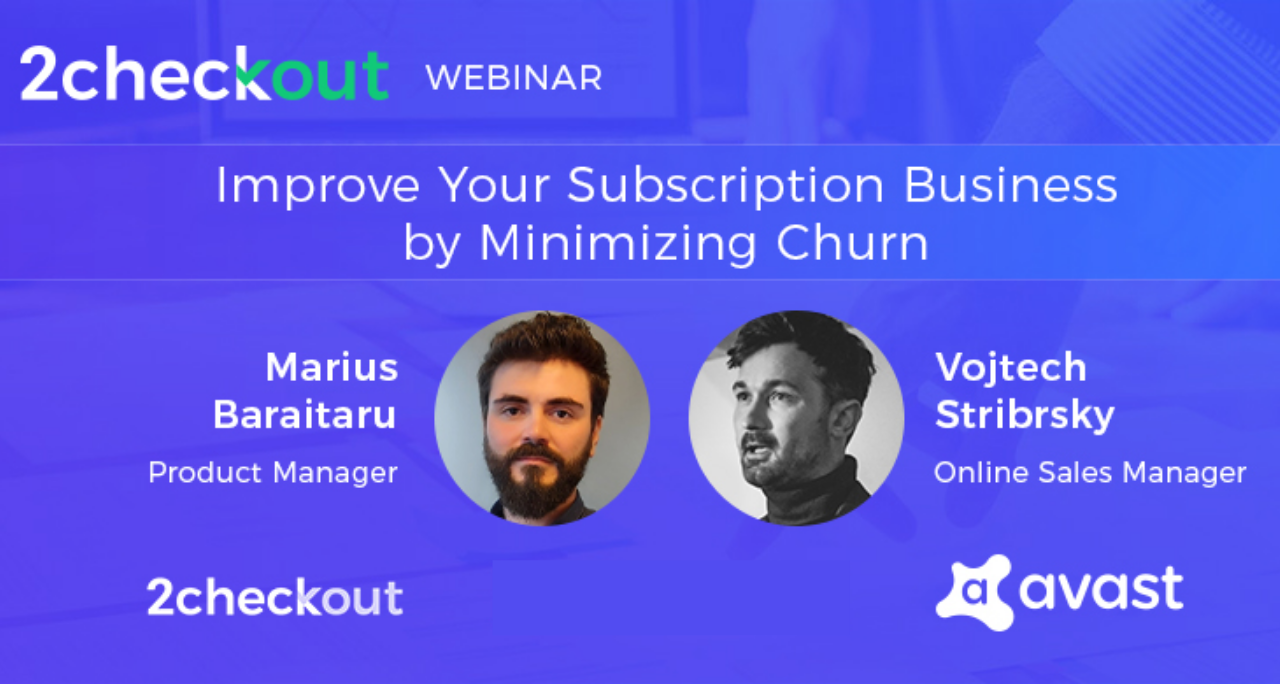Churn, also known as customer turnover or revolving door/leaky bucket customer flow, is undeniably among the biggest challenges a SaaS business faces. Churn puts continual pressure on a company’s sales team to maintain a flow of new customers (who can be expensive to lure), to make up for the corresponding flow of customers who are lost.
In one of 2Checkout’s recent webinars, “Improve Your Subscription Business by Minimizing Churn”, we dug deeper into why churn happens and what can be done to prevent it or minimize its impact, together with our guest speaker Vojtech Stribrsky, Online Sales Manager at Avast.
Churn is expensive, whether voluntary or involuntary
We started off by looking at some astonishing statistics: with just 1% churn each month, a business can suffer $3.1M (17%) in lost revenue over five years. If churn is as high as 5% per month, the loss can be as much as $10M (55%) over the same five years.
We then addressed the two types of churn: voluntary and involuntary. Involuntary churn happens in the background, creeping up silently. Voluntary churn is noisy, when your customer leaves you. A recent survey by 2Checkout narrowed down the most common reasons a customer will cancel a subscription and thus “voluntarily” churn:
- Unexpected charges on a subscription bill (72%)
- Not using the service enough (63%)
- Too expensive (60%)
- Inadequate customer service (56%)
- No option to pause subscription (45%)
- No special deals/discounts available (36%)

Vojtech echoed several of these same challenges for Avast, adding customer perceived value and expectations, brand and product loyalty, competition, and subscription length as additional influencers of churn.
Can voluntary churn be predicted?
The webinar gave us to opportunity to outline a few of the most useful things to track for a more accurate prediction of voluntary churn, in order to prevent it or at least learn from it for future customer relationships.
- Although churn can be predicted by many things, including industry and geography, who your customers are, if the offerings are low-end or premium, whether they are monthly and annual, and many other dimensions, establishing benchmarks will help you focus on what’s the most critical.
- Exploring how engaged your customers are is another way to estimate potential churn, with many KPIs to measure.
- Account updates. Another way to predict churn is to closely watch your customers’ account updates, as some of them may indicate imminent churn. Examples of clues to watch out for? Switching off notifications, changing to manual renewal, or removing payment data are just a few indicators we addressed.
- Feedback is obviously a good way to predict churn; when customers complain to your customer service or in online public reviews, you can sometimes preempt their decision to churn (or at least improve your product to prevent churn from future customers).
So, what are the best ways to prevent voluntary churn?
Together with Vojtech we introduced some of our best tips for preventing churn, both before a customer comes on board and after they commit.

- Offer flexibility and value. 2Checkout, for example, offers a lot of variety in our packages, which can be individually tailored for different regions or countries depending on what a particular customer is looking for. Optimizing for geos and local payment methods is a must.
- Offer different billing lengths. Consider monthly or yearly offerings, with incentives to subscribe for the longer term but a fit for everyone depending on their needs.
- Bill based on customer use rather than a set subscription amount, which gives them an alternative to churning if they feel they aren’t using it enough. The risk is that you leave money on the table, Vojtech says, and it all depends on how aggressive you want to be; you might offer this option in more competitive markets versus those markets where you are the premier choice.
- Sign your customer up for auto-renewal. Once you have acquired the customer, auto-renewal will contribute positively to their long-term experience and will ultimately help prevent churn. For those who have opted for manual renewal, make sure you have efficient renewal notifications, and perhaps even offer discounts for earlier or timely renewal.
This webinar is full of additional insights and expert advice about keeping voluntary churn from affecting your bottom line, with specific tips including offering pause subscriptions, discounts, as well as ways to follow up with churned customers to win them back.
To watch the entire webinar, please visit the dedicated landing page.






